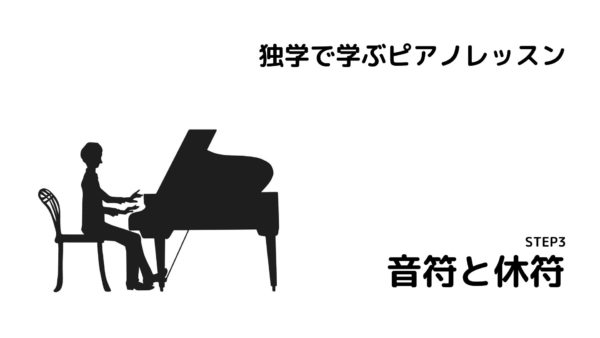
独学で無料でピアノを学ぶ大人の初心者のための学習講座です。
ステップ3では「音符と休符」について学習していきます。
これらは楽譜を読むために必要な基礎的な知識です。
初めてピアノを学ぶ方は、ここで出てくる用語がどれも難しく見えるかもしれません。しかしそれらすべてを、ここで覚えようとしなくて大丈夫です。これからの多くの楽譜を演奏していくことになりますので、その際に分からないところを振り返っていくようにしてください。
では詳しく解説していきます。
所要時間は「約15分」です。
目次
今回のテーマ
- 「全音符・2分音符・4分音符・8分音符」
- 「全休符・2分休符・4分休符・8分休符」
- 「付点」
- 「1拍の長さ」
- 「実際に弾いてみよう」
音符
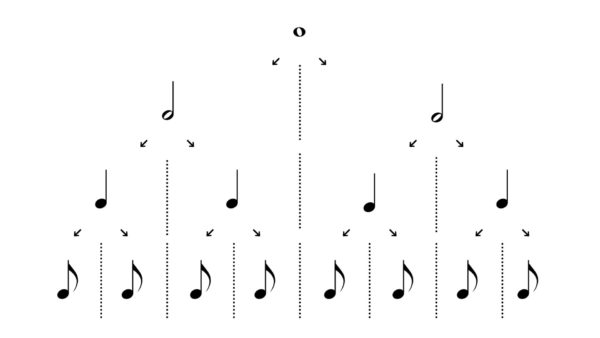
最初は「音符」についてのレッスンです。
音符を一言でいうと「音を出してください」という意味の記号です。つまり楽譜の中に音符があればそこでピアノの鍵盤を押さなければいけないわけですね。
すべての音符には音の長さが決まっています。長いものと短いものがあり、音符の形を見て判断していきます。
全音符
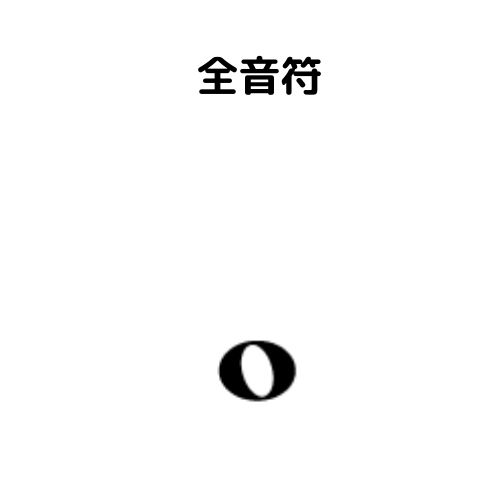
「全音符」はすべての音符のベースとなる基本の音符です。上図のように中が空洞の楕円で書きます。よく見るような音符の右上の「棒」は付きません。
これは音の長さが最も長い音符です。
この音符の音をピアノで演奏する際は、通常4拍数えます。(なぜ4拍かは後で分かります。)
2分音符
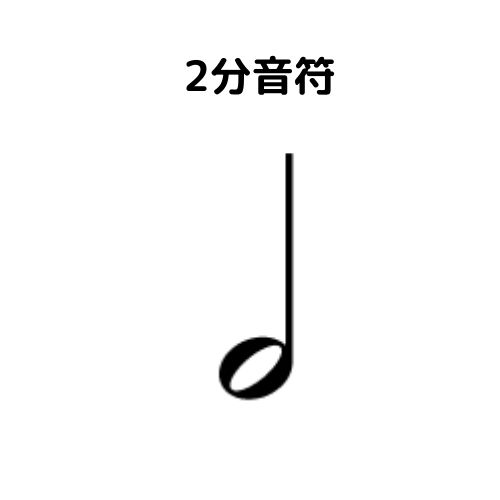
「2分音符」は全音符を2等分した長さの音符です。上図のように中が空洞の楕円で書き、通常右上に「棒」をつけます。
これは単体では音の長さが2番目に長い音符です。
「全音符を半分にした長さ」のため、この音符の音をピアノで演奏する際は、4拍の半分の2拍数えます。
4分音符
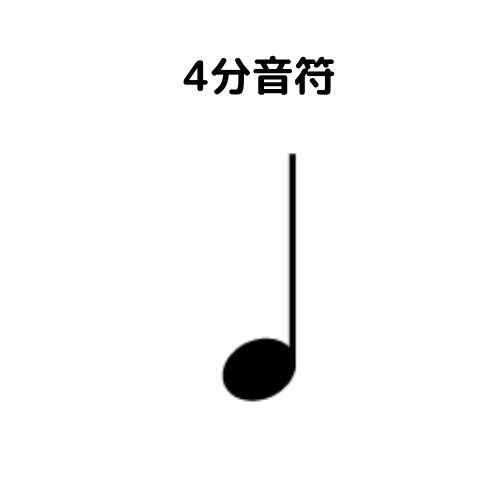
「4分音符」は最も基本となる音符で、上図にあるように中を塗りつぶした楕円に棒がついているものを言います。2分音符の楕円の中が塗りつぶされたものですね。
名前の通り「全音符を4分割にした長さ」です。この音符の音をピアノで演奏する際は、1拍数えます。
話は逆転しますが、この音符を1拍として数えることが多いため、全音符は通常4拍で数えるのです。
8分音符
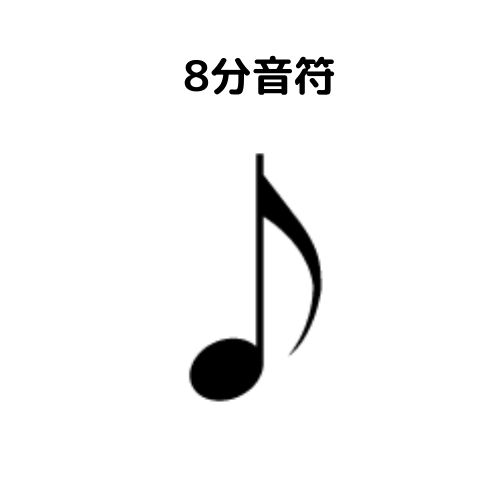
「8分音符」は、上図にあるように中を塗りつぶした楕円に棒がつき、さらに羽が生えたものです。4分音符に羽が生えたものですね。
これまでと同じく「全音符を8分割にした長さ」です。この音符の音をピアノで演奏する際は、0.5拍数えます。
0.5拍と聞くと、よく分からないかもしれません。例えば4分音符が2秒の長さであれば8分音符は1秒になるわけです。シンプルに4分音符の半分の長さと数えるほうが分かりやすいかもしれません。
これまで8分音符まで説明しましたが、音の長さがさらに半分になった16分音符や32分音符、64分音符なども存在します。しかし、少し難しい曲を演奏するまで、これらの音符を楽譜で見ることはほとんどありません。ここでは8分音符までをしっかり覚えてください。
※8分音符の連桁(れんこう)について
8分音符には羽が生えていますね。この羽が楽譜の中で場所を取ってしまうため、8分音符が連続しているフレーズはゴチャゴチャして音符が見にくくなってしまいます。それを解消するために連続した8分音符(やそれ以降の音符)には、下図のように連桁(れんこう)と呼ばれるものを使って繋げて書きます。
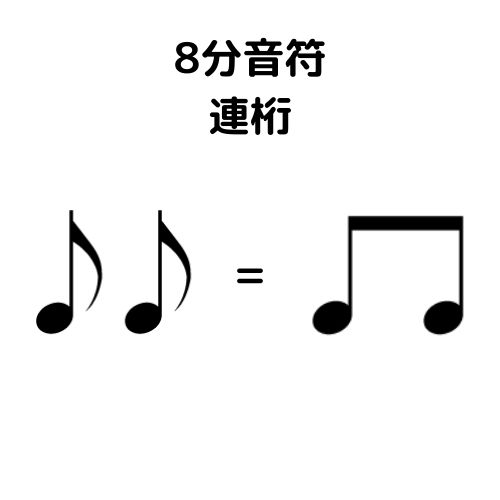
このように音符同士が1本の線でつながっているものは8分音符となります。楽譜を見たときになんの音符か迷わないように覚えておきましょう。
休符
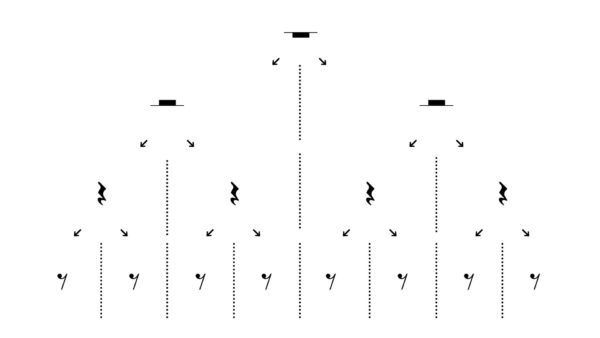
次は「休符」についてのレッスンです。
休符は音符の反対で「ここで音を出してはいけません」という意味の記号です。それまで演奏していても休符が出てきたら、一旦ピアノの鍵盤を引いて音が出ないようにする必要があります。
音符と同じように休符にも音の長さが決まっており、長いものと短いものがあります。代表的なものを見ていきましょう。
全休符
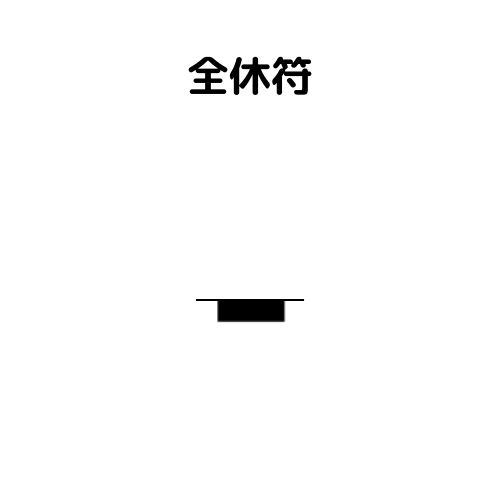
「全休符」は上図のように横線の下にくっついた四角い長方形で書きます。ここで横線とは、楽譜の横線のことです。
これは長さが最も長い休符です。
この休符が出てきたら、4拍ピアノの演奏を中断し休みます。
2分休符
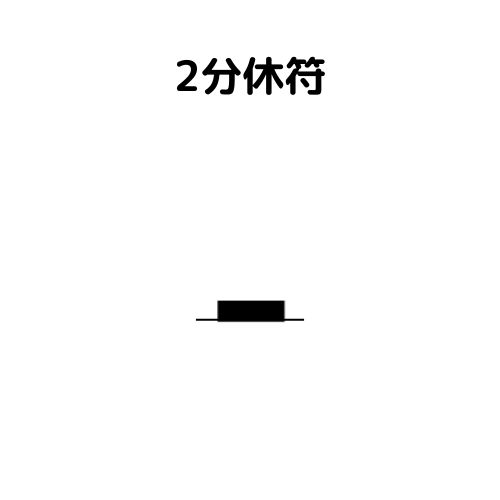
「2分休符」は上図のように横線の上にくっついた四角い長方形で書きます。ここでも同じく横線は、楽譜の線のことです。
全音符と非常によく似ていますが、中身は違いますのでしっかり覚えておきましょう。
これは長さが2番目に長い休符です。
「全休符を半分にした長さ」であり、この休符が出てきたらピアノの演奏を2拍休みます。
4分休符
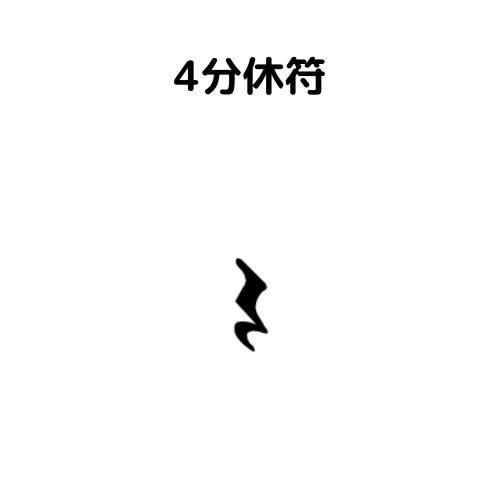
「4分休符」は4分音符と同じく最もよく使われる基本となる休符です。上図のようにカミナリマークの下にアルファベットのCを斜めに書いたような形をしています。
作曲や編曲をしない限り、これを楽譜に「書く」ことはないですので、「この形が4分音符」ということをなんとなく覚えておけば問題ありません。「読めるけど書けない漢字」みたいな扱いで大丈夫です。
名前の通り「全休符を4分割にした長さ」の休符です。この休符が出てきたらピアノで演奏を1拍休みます。
8分休符
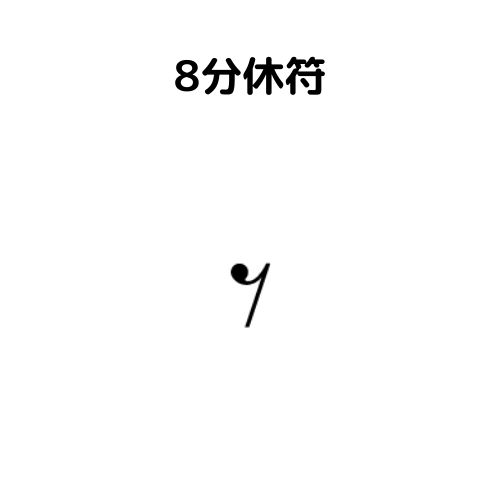
「8分休符」は上図のように、数字の7を変形したような形をしています。
これまでと同じく「全休符を8分割にした長さ」の休符です。この休符が出てきたらピアノの演奏を0.5拍休みます。
付点
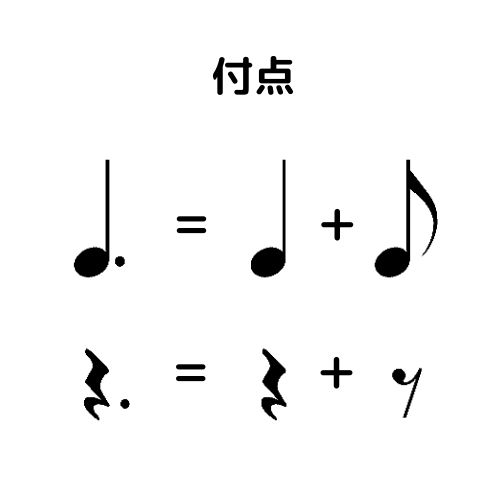
「付点」とは上図のように音符や休符の右下についた黒い点のことを言います。
付点がつくと、その音符や休符の長さは1.5倍になります。例えば上図のように4分音符に付点がつけば「1拍×1.5=1.5拍」となるため、ちょうど4分音符と8分音符を合わせた長さと同じになるのです。
ちなみに付点がついた音符は「付点〇〇音符(休符)」といい、上図であれば「付点4分音符」や「付点4分休符」と言います。
この付点がついた、中途半端な長さの音符や休符は意外と楽譜の中で登場してきます。必ず覚えておきましょう。
1拍の長さ
これまで多くの音符や休符を学んできましたが、すべて長さを「拍」で表現してきました。
ここで「拍って一体何秒なの?」という疑問が出てきます。
それを具体的に決めるために、楽譜の最初には下図のような「メトロノーム記号」というものが書いてあります。
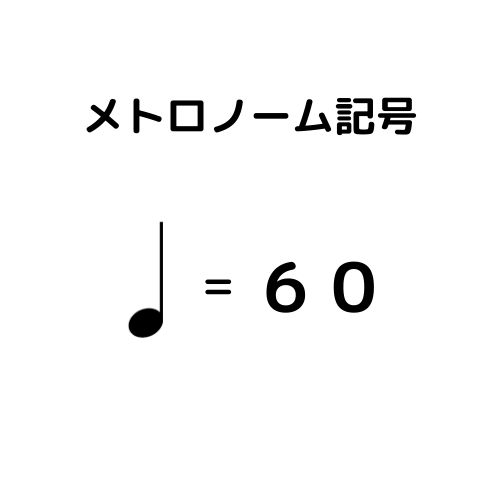
これは、1分間で演奏する音符の数を決めるものです。
例えば、上図のように「四分音符=60」と書いてあれば、「1分間(60秒)に4分音符を60回弾いてください」という意味になります。
つまり4分音符の長さは1秒になるわけです。それが分かれば、楽譜で出てくる全音符は4秒、2分音符は2秒、8分音符は0.5秒になりますね。
メトロノーム記号は4分音符だけとは限りません。次の画像を見てみましょう。

この場合「1分間に8分音符を180回弾いてください」の意味ですね。
つまり、8分音符1つで約0.3秒、4分音符で0.6〜0.7秒となります。
このように音符の種類は決まっていないため、数字だけ見て判断しないように注意しましょう。
実際に練習してみよう
さてここまで、「音符」「休符」を学習してきました。
それらを使って次の練習問題を演奏してみましょう。
難しいテクニックは使わない、簡単な音の並びで作成しています。
練習①

今回は右手でも左手でも構いません。ドを連続で演奏していきましょう。
練習②
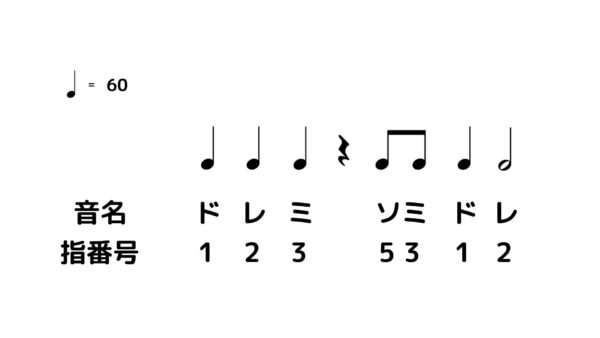
次は少し難しいですよ。
これは童謡「鳩(ぽっぽっぽ〜の歌)」のフレーズの1つを少し編曲したものです。
ステップ2で学習した指番号を使って、正しい音の長さで演奏していきましょう。
ここまで演奏できればステップ3はクリアです。
このレッスンのまとめ
- 「音符」
- ・音符は音を出すところで使う記号
- ・全音符で4拍
- ・2分音符は全音符の半分の長さ、2拍
- ・4分音符は全音符の4分の1の長さ、2分音符の半分の長さ、1拍
- 「休符」
- ・休符は音を出したらいけないところで使う記号
- ・休符も音符と同じように全音符が4拍
- 「メトロノーム記号」
- ・音符が1分間に演奏される回数を表す
コメントを残す